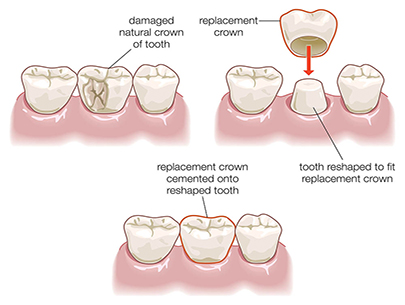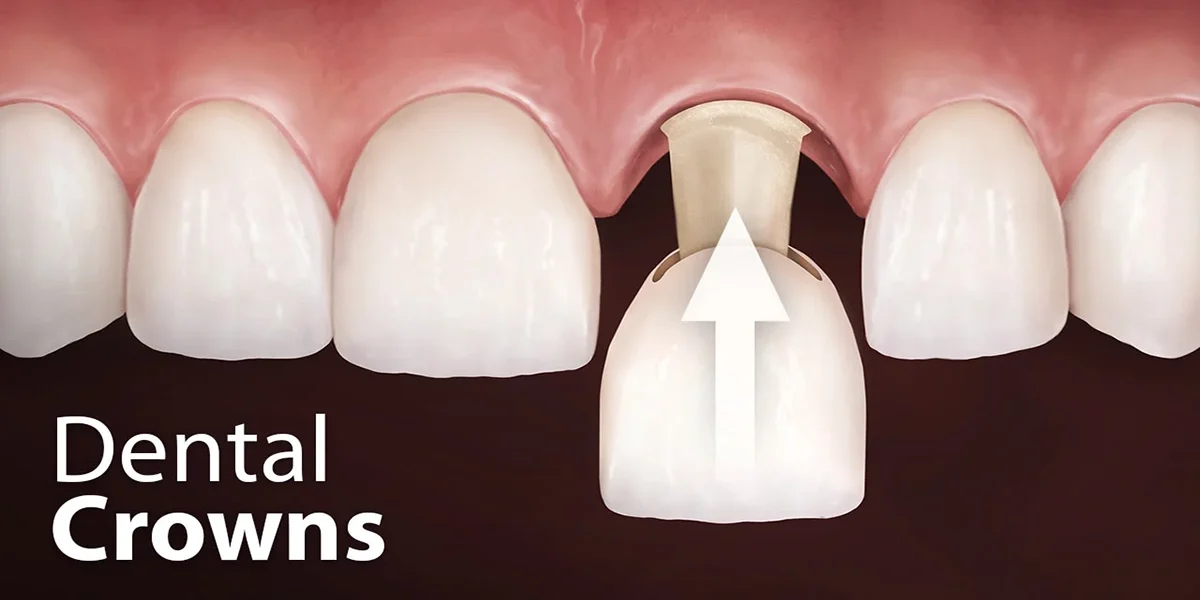8 important points about How to take care of your dental crowns
Your dental crowns need to be regularly brushed and flossed in order to remain healthy and long-lasting. To prevent harming the crown or causing irritation to your gums, use a toothbrush with soft bristles.
To prevent the crown from being dislodged, floss gently around it. Including mouthwash in your regimen is also advantageous since it lessens microorganisms and improves breath quality.
Appropriate Lifestyle and Nutrition Changes
You can improve your general oral health and further safeguard your crowns by making dietary and lifestyle changes.
Your crowns may get damaged or dislodged by foods like caramels and hard items like ice or nuts. To keep your crown safe, it is advised to stay away from these kinds of foods. Rather, choose things like soft fruits, vegetables, and lean proteins that are good for your mouth. It’s also critical to limit consumption of acidic and sugary meals
These may cause problems like decay or sensitivity by harming the enamel around your dental crown.
In addition to weakening your immune system, which makes it more difficult for your body to fight off infections, tobacco can discolor your crowns, making them less attractive. Additionally, tobacco raises the risk of deterioration around the crown and contributes to gum disease.
Wearing a mouth guard is crucial to preventing damage to your crowns if you participate in vigorous sports. Mouth guards shield your teeth from harm by absorbing shocks. In order to shield their crowns from undue wear and pressure, persons who grind their teeth, or bruxism, should also speak with their dentist about wearing a sleep guard. Both temporary and permanent crowns benefit from these precautions.

Regular Dental Visits
The longevity and stability of your dental crowns are greatly enhanced by routine dental checkups.
Regular crown checks and expert cleanings by your dentist twice or three times a year aid in the early detection of any possible problems. Plaque and tartar accumulation that you might overlook with regular brushing and flossing are removed by professional cleanings. Your crowns and general dental health will be further protected by doing this.
Handling Typical Crown Problems
Brushing and flossing alone may not always be sufficient to control plaque and avoid cavities. Gum disease and decay in the tooth structure beneath the crown can result from plaque hardening into tartar. The stability of a crown may be jeopardized by cavities that develop beneath it, necessitating further dental procedures (such as a root canal or even extraction of the damaged tooth). Cavities and plaque accumulation are major threats to dental crown integrity. For expert cleaning, it is imperative that you see your Oakstone Dental dentist.
The following indicators will let you know when it’s time to see your dentist for a crown evaluation:
You should see your dentist right away if you find any chips or cracks in your crown. Over time, even little cracks can enlarge and jeopardize the structure and functionality of the crown.
If a crown shifts or feels loose as you chew, it needs to be fixed right away. Infection or decay may result from bacteria getting into the gap between a loose crown and the tooth.
It’s time to see your dentist if the rough edges on your crown are irritating your tongue or other oral tissues. In addition to being unpleasant, these jagged edges could be a sign that the crown is deteriorating or broken.







